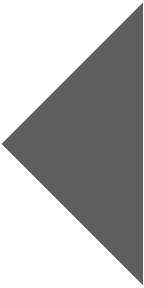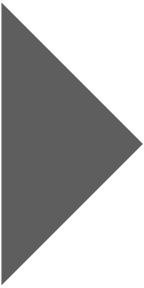


I chose Medium — the social journalism platform — as the means of publishing the New RC Soaring Digest mostly because it makes copy both consistent and presentable with the minimum amount of effort.2 While generally this decision was a success, Medium has some limitations which precluded it from consideration moving forward — specifically with respect to the launch of BluFly Media.
More than anything else, Medium’s most startling deficiency is its analytics' inability to convey anything more than the “number of unique daily visitors”. Moreover, this is qualified with “[each] visitor is counted once per day, even if they view multiple pages or the same page multiple times.” Okay, let’s see how that works in practice:
The number of visitors recorded for the New RCSD on January 31, 2021 — the first day for which statistics were kept — was 1,232. On February 1, 2021 — the very next day — there were 764 visitors. The critical statistic which is not available is how many of the 764 visiting on the second day were the same — or different — from the first day. With Medium, there is simply no way to know.
Assuming all 764 on the second day were so impressed with what they read on the first day they came back for another look — that is, 100% audience overlap from the first day to the second — then the maximum size of the audience was still 1,232. The high-water mark remained the same. On the other hand, if 764 brand new audience members showed up on the second day, then the maximum size of the audience for this two day period was 1,232 + 764 = 1,996.
This is all I knew for sure. Over the first two days, the size of the audience was no less than 1,232 and no larger than 1,996.
To further illustrate, let me add a third day: on February 2, 2021, the total number of visitors was 584. The minimum size of the New RCSD’s audience was still 1,232 whereas it might have been as high as 1,232 + 764 + 584 = 2,580. Without knowing what the audience overlap from one day to the next, this wide range is the only ‘known known’. It’s an absurdly inadequate measure.
On October 7, 2021, the New RCSD hit its all-time high-water mark of 1,339 daily visitors. Consequently, this is the smallest the New RCSD’s audience could have been. At the other end of the spectrum the total is almost laughable: the sum of visitors for every day in its all-too-short life, the New RCSD was — get this! — a whopping 170,716. In the highly-improbable-but-not-impossible event there was no overlap from one day to the next for the entire run of the publication, the size of the audience for the New RCSD would indeed be 170,716.
So, in retrospect, how many people read the New RCSD? The only absolutely accurate response I could provide was “somewhere between 1,339 and 170,716”. Of course it’s a ridiculous answer and as such, one I never provided to anybody for any reason while the journal was being published — let alone organisations who might be able to help monetise the New RCSD at some point.
Like — y’know — advertisers. Apparently these numbers are quite important to them.
Over the hundreds of articles published in the New RCSD — and the hundreds of thousands of times they were viewed — there was one specific metric which was shockingly and stunningly small: the average amount of time a reader spent on a given article was about 75 seconds. Based on the average adult’s reading speed, this works out to about 300 words.3 This tiny number also proved difficult if not impossible to budge upward from one issue to the next.
This is as much as we could squeeze out of a typical reader for a typical article in two-and-a-half years’ worth of issues.
As a direct consequence, the thousands of words which made up the reader-written, richly detailed and lovingly crafted articles found in each issue of the journal, only this pitifully small number of them were actually being read.
Furthermore — and while I don’t have concrete evidence to support it — I’ll speculate and go one step further: I believe most of these 75 seconds were actually spent scrolling up and down grazing for the occassional photographic nugget or attention-grabbing headline to stop the scrolling and focus the readers' attention, however briefly.
In other words, almost nothing in any given article was actually being read.
This does not make readers of the New RCSD bad people. Far from it! My interactions with 99.9% of the authors and readers of the New RCSD were fantastic — almost universally smart and really nice people. However, they are also unlikely to be different than anybody else in these strange times. For a whole variety of reasons, all of which are beyond the scope of this series of articles, our collective attention spans have been reduced to something approaching nothing.
For the time being, it’s a fact we simply have to accept and make the best of it. That is, if it doesn’t trigger the downfall of civilization-as-we-know-it before we have a chance to turn this trend around.
We all love all the great free stuff we get on the internet, right? Except it’s not free. We all know this, of course, but we also all put on our collective blinders and pretend it can produced without cost. Kind of like repealing the laws of gravity because we don’t like how much we weigh.
Good stuff on the internet takes talented people time and lots of other resources to produce. Truly great, crafted-by-humans content costs an absolute fortune. Sure, in a lot of cases it requires almost nothing to reproduce or distribute — these costs really have disappeared for the most part — but the people who create it still need to buy a bag of increasingly expensive groceries every couple of days. Again, it’s not conjecture. It’s provable physics and finance.
To pay for all the ‘free stuff’, a certain amount of this ‘free’ use has to be converted into paid use: hence the notion of a conversion factor. Subscriptions are one way to accomplish this:
“Yeah, like I’m going to pay for subscription when I can go somewhere else and get stuff just as good for free!”
If you have never said that at some point then, candidly, you’re a better person that I am. However, as as result of this pervasive attitude, here’s another hard fact: the overwhelming odds are if we’re asked to voluntarily pay for something we have been getting for free, we’re going to take a pass. It sure ain’t right but, once again, it is the way it is.
Complicating things, the New RCSD inherited a legacy of being published for free since its inception in 1984. Along with this, a promise to maintain it as a free journal. Beyond this one proviso, all options were open to try and drive revenue to achieve some sort of financial viability.
Here’s yet another hard truth: all attempts by the New RCSD to generate revenue within these constraints resulted in more-or-less the same outcome: the conversion factor from free use to paid use, if it wasn’t absolute zero, you could certainly see it from there. 🛩️

1Heartfelt thanks to Westwind Air Service for providing access to this beautiful photo on Unsplash under the generous terms of the Unsplash License. It provided the perfect visual metaphor for the subtitle of the article.
2This decision was discussed in my previous essay Requiem for an Online Publication published in June of 2023. Details begin with the section All Systems Go — Kinda. Sharp-eyed readers will also notice quite a bit of the first section of this article is derived from the earlier work.
3That’s based on a rate of 238 words-per-minute according to Reading Speed Statistics by Dimitrije Curcic published in November of 2021 in WordsRated.

